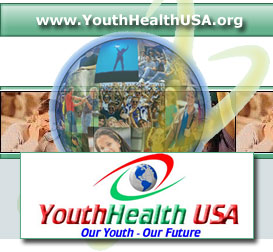The story starts with a diagnosis of Leukaemia. Ron was eight and his sister Susie six. In the “fifties” leukaemia was a death sentence. During the eight months of Susie’s struggle, Ron would often retreat to a eucalyptus grove to pray for Susie’s recovery. The church prayed; other churches prayed, yet Susie died. Ron became bitter and angry; all he could think was, life isn’t fair. His behaviour reflected his anger that he aimed at God and religion in general. His university days, in the sixties, were much the same, full of “me” stuff, anti-Vietnam protest, draft dodging and rebellious rhetoric. Then in the early seventies a quite unexpected event happened; he had a profound spiritual encounter in Auburn California, an encounter that radically changed his thinking and behaviour.
The next few years began an intense search for spiritual knowledge and personal understanding. The ‘Book of Proverbs’ from the First Testament of the Bible was read daily. Study replaced TV, and Mary and Ron’s lifestyle became one of service and striving to live for others. Over that time several men and women influenced Ron. The writings of C.S. Lewis, J.R.R. Tolkein, George McDonald, and others contributed concepts, principles, values and teaching metaphors – all of which Ron gleaned and which became influences on his fable for our time, Gem of the First Water. Bill Gothard and his ‘Basic Youth Concepts’ conferences also contributed much. In fact it was at one of Bill’s ‘Basic Youth’ conferences that Ron and Mary learned about creating alternatives, which, a few years later, became the name of the childcare corporation they founded.
After Gem of the First Water, other work evolved and eventually Ron’s second book, The Travels of Plymouth, was written. These books form the foundation texts for the TSI process. Both Gem of the First Water and The Travels of Plymouth are allegorical readings, informed by Ron’s spiritual experiences, and his reading of the writings from the Judeo-Christian spiritual tradition. The books are of a similar genre to texts within that tradition; e.g. the story of Joseph from Genesis also has a ‘journey’ motif with a peer/hero and a set of learnings that change lives and nations.
The imagery and motifs in the TSI books both reflect and speak to imagery that is enshrined in these traditions. This is particularly relevant to our contemporary culture as much of what is referred to as ‘western culture’ has been informed by these traditions over the last two to four millennia.
The writings that have most influenced the TSI material are writings from the Wisdom corpus of the Hebrew Bible, including the Book of Proverbs. These Hebrew texts also had a dominant influence in the language, structure and imagery of the Gospels of the New Testament of the Christian tradition. They were texts written for the ‘market place’ of (religious) society; like TSI they are writings that require us to ‘question’ and make new meaning of our difficult and sometimes ‘stuck’ human experience. They are texts that directly address the everyday issues of being human and of survival; extracting health, meaning and fulfilment from the multiplicity of information and situations that bombard us each day. These are the very things that the young people of our time are striving for in their many and varied ways.
The masterstroke of the TSI material, written by Ron, is that he has been able to gather much of the values and life development themes from these books and inculcate them into texts that are contemporary and relevant to young, and older people of the twenty-first century. Because of this, the material is directly applicable to the lifestyles that we lead today. It also means that this material crosses the boundaries between secular and religious, common and spiritual; in fact these boundaries cease to exist, showing themselves up as the artificial and constructed parameters that they are.
The TSI material is ideally suited for a religious educational environment. Not only is it a journey that can be taken over a period of 12 to 20 weeks but it also speaks to the world of young people as it is without the need for some sort of secular/religious translation. The images and motifs are rich in meaning and offer interesting places to pause and explore.
The material is easy to use, will interface with a broader religious education program, and has considerable resource material available to support the program. TSI has the added advantage of providing a seamless transition from the religious context to the usual emotional and mental context of the young person. As such it offers rare opportunity to meet and deal with a large range of life experiences that are part and parcel of the day-to-day life of contemporary youth. The program is ideally suited for a youth group or adult education environment.
Read About TSI In:Youth or Adult Justice, Education, Social Work, Mental Health, Religious Education
|

